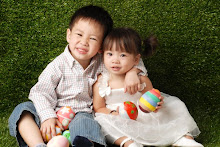05.12.09 - Research on ants
Research and Lessons
Classification: Ant Classification
Kingdom:
Animalia
Phylum:
Arthropoda
Class:
Insecta
Order:
Hymenoptera
Suborder:
Apocrita
Family:
Formicidae
Anatomy: Ant Anatomy, Fun Facts, Ant Brains, Matchbooks, Run Ant Run, Let’s Take a Ride
Ants are usually 2-7mm long, with the exception of the carpenter ant which can stretch from 2cm up to an inch!
Being an insect, ants have three parts; the head, thorax, and abdomen or (head, trunk, and metasoma). Each part contains more important parts for the functionality of this fascinating insect:
HeadFeelers or Antennae - the better to touch and smell withPinchers - the better to carry, dig, defend and eat with (an ant squeezes its food with its pinchers to get the juice because it can not chew).Compound eyes - the better to see many of the same thing withBrain - the better to process with (40,000 ant brains are about the size of 1 human brain, 1 ant brain has the processing power of a Macintosh11 computer, and ants have the largest brain among all insects).
Thorax6 legs with a sharp claw on each end - these make me an insect and help me climb better and run fast (if a human were an ant he/she could run as fast as a race horse).
AbdomenPoison sacStinger - the common Black Ants and wood Ants have formic acid instead (some birds will put these ants in their feathers to ward off parasites).2 stomachs - one for me and one for the colony.
Who's Who? Who's Who in the Ant Colony Side by SideQueen Ant- Queen ant lays all the eggs and is the mother. Young queens have wings but old queens do not. All have large abdomen's to produce eggs. Some can lay millions of eggs per year.Male Ants- All males have wings and can be seen for only a few weeks in the summer. They mate with the queen and do no work in the colony.
Worker Ants- All female, but do not lay eggs. They are the smallest ants, they do all the chores: clean the nest, gather food, and defend the colony.Worker Jobs: Heigh-ho! Its Off to Work We Go!Workers have many different jobs to do. They begin their work by cleaning themselves. A couple days later they start sharing food and licking each other.Here are a some of the different jobs done by the worker ants.
Queen Tender: Young ants help the queen deliver her eggs by grabbing the eggs with their mandibles.
Nurse Ant: Young ants lick larvae so they do not dry out, and feed them so they grow.Tunnel Diggers: Young ants dig tunnels for traffic and new chambers to store eggs and larvae and food.Guard: These ants stand near the entrance of the nest, blocking strange ants from entering.Foragers: The oldest ants search for food. Most foragers search within 50 feet of the nest, but if food is scarce, they may travel thousands of feet.
How an Ant Colony Starts: The Beginning of an Ant Colony T-book
1) After hot summer rain, a young queen takes off on her mating flight. She flies into a cloud of male ants and mates in the air.
2) Afterward, all the males die, and the queen returns to the earth. She breaks her wings off by rubbing them on the ground.
3) Then she digs a hole in the soft, moist earth and starts laying eggs. She will never leave the nest again.
4) During the next 3 months, the eggs develop through four stages: egg, larva, pupa, and adult ant.
5) After they have hatched, the first workers assume the duties of the colony-- searching for food and protecting the queen.
Life Cycle: Life Cycle WheelEgg- queen ants lay tiny oval shaped eggsLarva- worm like larva grow and grow causing their skin to shed; they don't have eyes or legsPupa- once the larva reaches a certain size, it spins a cocoon and pupates; during the time in the cocoon, the ant's body changes to adult formAdult- the pupa emerges into an adult
Life Expectancy: Queen vs. Worker bookA worker ant generally lives 45-60 days. However, the queen can live up to 10 or 20 years!
Ant Talk: Ant Talk ShutterflapAnts express themselves by using these senses.
TOUCH: Ants tap one another with their antennae to announce the discovery of food and to ask for food.
SMELL: They emit pheromones that other ants smell through their antennae. This warns them of danger, says hello, or helps others to work harder.
SOUND: When they are trapped, they rub the joint between their waist and abdomen to make a squeaky sound that other ants hear through their legs.
TASTE: They exchange food with other ants mouth to mouth. This sharing of nutrition and chemicals says, "We're Family!"
Fun Facts: Fun Facts, I’ve got the Power
If a man were an ant he could run as fast as a racehorse, which is approximately 40mph
There are over 10,000 known species of ants
If a worker ant finds food it leaves a trail of scent
An ant has two stomachs one for him and one for the colony
Some worker ants even have the job of taking out the trash (removing it from the nest)
In the night ants put the eggs deeper into their nests
Ants can lift 20-50 times their own weight
Different Kinds of Ants: Types of Ants, Fun Facts, Matchbooks
KIND
FACT
DIET
HABITAT
Leafcutter
-largest ants in their area, the queen can be as large as a mouse
-they make their own antibiotics!
-they use leaves as compost to grow a special fungus to eat
-Central and South America
-nests can be 30’ wide and 20’ deep
-can be 2-3 million in one colony
Army
-queen ant can lay up to 4 million eggs in 1 month
-they forage for prey
-they have a hierarchy: queens (eggs), workers (sterile females), and soldiers (defense)
-up to 700,000 in a colony
-they can kill and eat up to 100,000 animals in one day
-lizards, snakes, chickens, pigs, goats, scorpions, birds, and insects
-South America
-their nests are made up of Army Ants!
-they use jaws & claws to connect and make walls
-these temporary nests are necessary because they are nomadic
Carpenter
-each worker ant varies in size within the same colony
-they do not eat wood
-can stretch up to 1”
-living and dead insects, meats, fats, sweets of all kinds
-indigenous to many parts of the world
-live/dead damp wood is where they nest (trees, houses, etc.)
Slave Maker
-queen ant will either fake her death or charge right in to kill the queen of another colony
-the goal of all types of slave maker ants is to get someone else to do the work
-regular ant diet: insects and such
-warm climate
-the nest of another colony
Harvester
-unlike most ants they can chew
-can have a harmful sting
-can be confused with the fire ant
-seeds and dead insects
-southwest USA
-grassland, ornamental turf
-they make a clearing of about 3’-6’ circle of no vegetation
Fire
-they have venom
-they bite just to hold on then they sting
-they are attracted to electrical currents and have been known to short out appliances.
-feed on young plants, seeds and sometimes crickets
-indigenous to many parts of the world
-large mounds in open areas
-under brick, rocks or logs along highways, river banks, ponds or lawns
The Ant Year: A Year in the Life of an AntApril – open nestMay – time to mate and lay eggsJune – larvae grows and growsAugust – work, work, workNovember through March – hibernation
Copy Work: Copywork Simple Fold(Proverbs 6:6)
“Go to the ant, you sluggard; consider its ways and be wise!”









0 Comments:
Post a Comment
Subscribe to Post Comments [Atom]
<< Home